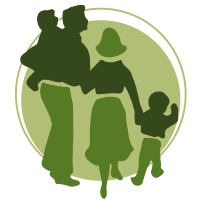What is Osteoporosis
Osteoporosis literally means ‘porous bones’. The bones in our skeleton are made of a thick outer shell and a strong inner mesh filled with collagen (protein), calcium salts and minerals. The inside looks like honeycomb, with blood vessels and bone marrow in the spaces between the bone. Osteoporosis occurs when the holes between the bone become bigger, making it fragile and liable to break easily. Osteoporosis usually affects the whole skeleton but it most commonly causes breaks to bone in the wrist, spine and hip.
Osteoporosis affects more women than men with females over the age of 55 being the most susceptible mainly due the change of hormone levels during the menopause. However bones may start to thin (osteopenia) in the years leading up to the menopause but because there are no symptoms in the early stages, it is difficult to know if your bones are affected. Many people find out they have osteoporosis if they have a fracture – commonly in a wrist or hip.
Risk Factors
- Hormonal changes caused by early menopause or hysterectomy
- A family history of osteoporosis.
- A low impact trauma/impact facture, esp of the wrist, spine or hip.
- Long term use of steroid medication. Steriods can reduce calcium absorption in the gut and increase calcium loss in the urine.
- Smoking & high alcohol consumption.
- Poor Nutrition. Adequate nutrition is extremely important in maintaining healthy bones and preventing osteoporosis.
If you tick any of the above factors and feel that you may be at risk, ask your GP for a bone screen.
Foods to increase in the diet
- Include wholegrains such as brown rice, millet, quinoa, vegetables, beans, pulses, soya products, fish, seeds, free range eggs and fresh fruit.
- Eat a variety of calcium rich foods. Include limited amounts of dairy produce as well as grains, sea vegetables, sesame and pumpkin seeds, almonds, dried figs, broccoli and dark green leafy vegetables.
- Include oily fish, nuts and seeds. These foods contain the essential fatty acids vital for bone health.
- Include soya beans and soya products. These foods contain nutrients which help to alleviate menopausal symptoms and improve bone mineral density.
- Ensure that stomach acids are maintained. This is essential for vitamin and mineral absorption. Try sipping a squeeze of lemon in a little warm water 10 minutes before eating to encourage production of digestive enzymes
- Drink plenty of water throughout the day. Aim for 6-8 glasses
So are there any foods that you should be avoiding?
Foods to reduce in the diet
- Foods rich in oxalic acid. This includes rhubarb, swiss chard and spinach. Oxalic acid inhibits mineral absorption.
- Foods rich in phytic acid. These foods, which includes wheat bran, binds with minerals in the colon and carries them out of the body.
- Salt. This causes increased amounts of calcium to be excreted.
- Refined carbohydrates and starch carbohydrates. These foods lack essential minerals.
- Stimulants. Foods such as sugar, tea, coffee and alcohol have been linked to bone loss. Avoid fizzy drinks.
- Foods which cause inflammation. These include too much red meat, dairy produce, fried food and saturated fats.
What else can I do to help myself?
Other advice
- Take regular weight-bearing exercise. This is essential for healthy bones. Weight-bearing exercise includes, brisk walking, skipping, tennis, aerobics. However, do not exercise excessively.
- Expose the skin to sunlight. This stimulates the synthesis of vitamin D, a vital nutrient for calcium absorption. Consider taking a Vitamin D supplement if you are unable to do this. Ask your GP for a test.
- Do not smoke.



